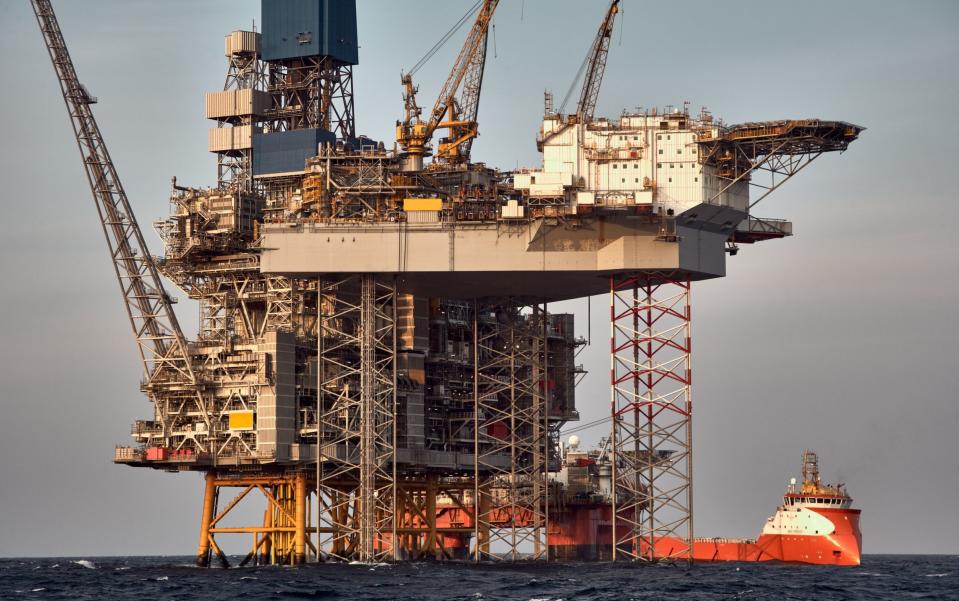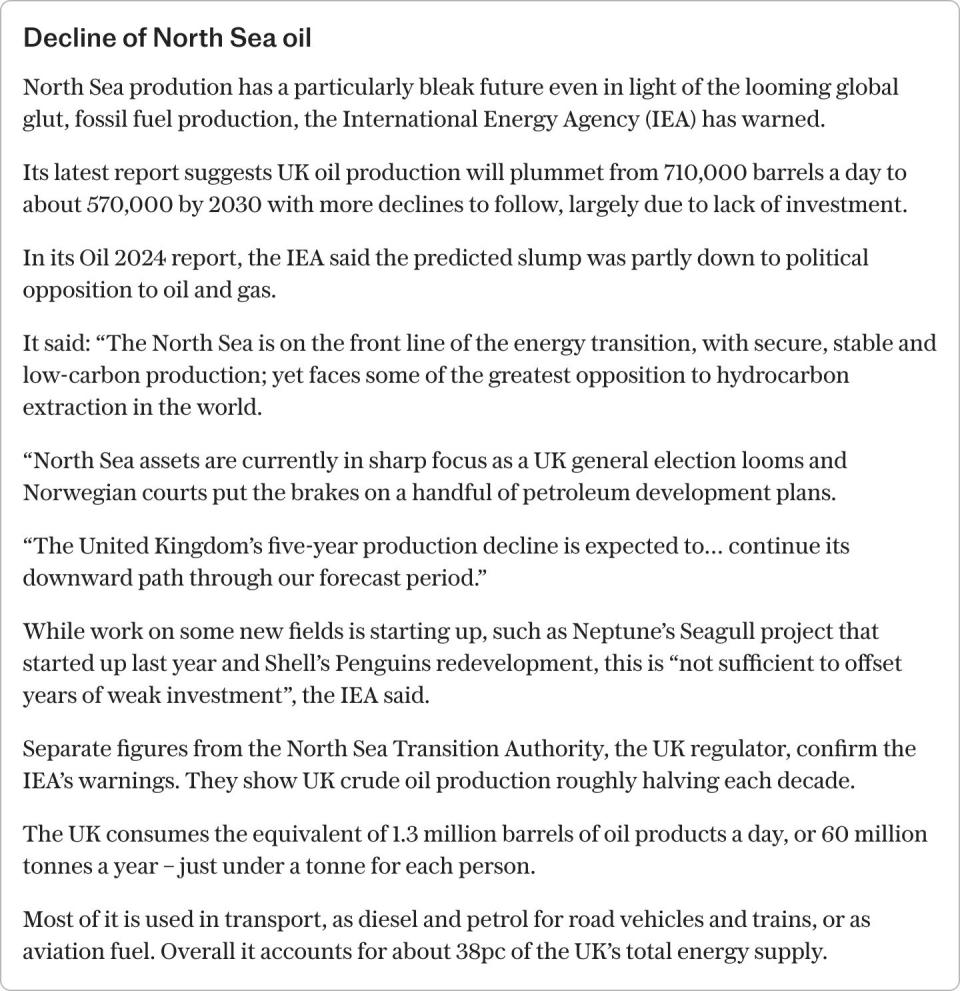World faces ‘staggering’ excess of oil by end of decade, warns IEA

The world will face a “staggering” excess of oil by the end of the decade, the International Energy Agency has said, as producers continue to plough money into new projects despite the shift to net zero.
The IEA said an “unprecedented” glut of oil by 2030 would disrupt attempts to manage the market by Opec+, the Middle East-dominated oil cartel.
It would also create huge challenges for the booming US shale industry whose success has recently made the country the world’s leading oil producer.
The IEA’s Oil 2024 report said rising sales of electric vehicles, the increased adoption of renewable energy sources such as wind and solar, and the reduction of demand from China would leave the world with more oil than it needs by the end of the decade.
“A ramping up of world oil production capacity, led by the United States and other producers in the Americas, is expected to outstrip demand growth over the 2023-2030 forecast period,” said the report.
This will “inflate the world’s spare capacity cushion to levels that are unprecedented,” it added.
The IEA said the world would have “a staggering 8 million barrels per day above projected global demand” by the end of the decade.
“This would result in levels of spare capacity never seen before other than at the height of the Covid-19 lockdowns in 2020,” it added.
If the projections prove correct, they would have significant geopolitical ramifications. A glut of oil would significantly diminish the power of Middle Eastern producers, who have for decades held sway over prices through the Opec cartel.
The Saudi Arabia-led coalition has already seen its power diminish in recent years as US shale producers have ramped up supply.
Fatih Birol, the IEA’s executive director, said: “We expect that beyond 2024 oil demand growth will continue to slow down and before 2030 will hit a plateau and peak.”
He said the increased adoption of electric cars was one of three “key drivers” of the shift.
Mr Birol said: “We expect more than one out of five cars sold in the world will [soon] be an electric car and indications we are getting from the market confirms this number may be even slightly higher… Electric cars are becoming cost competitive to the internal combustion engine.”
He added: “The second driver comes from electricity generation. Today, the Middle East and some North African countries use significant amounts of oil to generate electricity – about 1.5 million barrels per day.
“That is driven mainly by Saudi Arabia. Iraq, Kuwait and others. And we know that there are strong plans in place to replace the oil used for electricity generation by renewables or natural gas.”
Mr Birol said the slowdown in oil demand from China was also crucial, linked to a predicted slowing of economic growth from 6pc a year to 4pc.
He said: “China is the largest oil importer of the world and the Chinese economic slowdown means a slowing down of oil demand.”
The combination of these factors will lead to “a major, major surplus”, Mr Birol said. He added: “In my view it might be one of the highest in history.”
Last year the world consumed about 102.2 million barrels of crude oil per day. This is still expected to rise to about 105.4 million barrels by 2030 – meaning greenhouse gas emissions will also keep rising.
However, crude oil production is expected to rise much faster, reaching 113.8 million barrels a day by 2030.

The IEA’s regional analysis shows that the biggest reductions in demand will come from North America, where overall demand is expected to fall by 1.5 million barrels a day by 2030. Similarly, demand in Europe will fall by about 1.1 million barrels a day.
Mr Birol said the growth in supply was being driven by multiple oil producers but especially those in North America. US crude oil production has risen from about 5m barrels a day in 2010 to 13m in March 2024, according to the US Energy Information Administration.
The IEA chief called on governments and energy companies to adjust their policies and business plans to reflect the “new realities” of the markets.
Toril Bosoni, the IEA’s head of oil industries and markets, said: “We’re already seeing quite a few announcements of refinery closures in Europe and the US over the coming years. We do see the risk for increased refinery closures.”

 Yahoo Finance
Yahoo Finance 